Byrne’s Jane Austen Portrait: By Eliza Chute?
 Jane Austen‘s presumed portrait (at left), c1815, may have caused some hearts to skip a beat; mine skipped several beats for a far different reason: The unmistakable relationship to another portrait, a family portrait, indicating that the artist might be Eliza Chute was staring me in the face!
Jane Austen‘s presumed portrait (at left), c1815, may have caused some hearts to skip a beat; mine skipped several beats for a far different reason: The unmistakable relationship to another portrait, a family portrait, indicating that the artist might be Eliza Chute was staring me in the face!
At the beginning of November, I received the first email from author Paula Byrne, asking about Eliza. Her probing caused only one conclusion: that she had come across a portrait. Answering her queries in the abstract was difficult: I had only a passing acquaintance with work by Eliza Chute — mainly those drawings on display at The Vyne. Not being resident in England, it has been four-plus years since I’ve seen them. And even then: Which belonged to Eliza? Which to her sisters Emma or Augusta?
Dr. Byrne’s first questions concerned Eliza Chute’s whereabouts in 1814. There is no Eliza Chute diary for that year [if you have it, do let me know!], which makes the question harder to answer; that is also the year before Emma’s diaries begin; and the year in which Augusta Smith lost her husband. Dr. Byrne was also curious about the Smiths’ George Street, London residence. She had begun her email stating that she was commissioned to write a new Austen biography; she ended that first message by saying, “I have discovered she {Eliza Chute} was a painter of some repute. Do you know anything about this?”
Thanks to Mike E., I have an engraved portrait of Joshua Smith based on a portrait by Emma Smith (“Aunt Emma” to my Emma Austen Leigh). Mike photographed The Vyne’s copy; another copy exists at the Wiltshire Heritage Museum. Emma had great talent for taking a likeness! What about Eliza??
Ah, so much time could have been saved if Paula Byrne had forwarded a picture of the portrait’s front and identification! But we researchers like to hold our cards close to our chest…
So to answer Paula Byrne’s Question: Where was Eliza Chute in 1814, and what about George Street?
Thanks to Mark Woodford, and the 1798 diary of Augusta Smith, Great George Street was a very well-known address: there is even discussion of the rooms and layout of the place at Victoria History. Alas, Joshua, who grew less in health as 1819 approached, seems to have given up his George Street residence in 1812.
Obviously, Great George Street’s proximity to Westminster (Joshua Smith was a Member of Parliament), was of interest; seeing the portrait, one can see why. But family letters put Eliza Chute, when she was in London, at her sister Augusta’s Portland Place address in these mid-eighteen-teen-years.
“As to Eliza’s artistic abilities —,” I replied, “I’ve read in Emma’s diary that the Duke of Wellington was impressed enough to invite her to Strathfield Saye to copy from his Old Masters (this of course a typical “exercise” for artists — male and female — to hone their skills). I have a very small image (culled from elsewhere on the web…) of h er portrait of her sister Maria. This comes from a book — A History of the Comptons of Compton Wynyates {another Compton / Northampton property, in addition to Castle Ashby}.”
er portrait of her sister Maria. This comes from a book — A History of the Comptons of Compton Wynyates {another Compton / Northampton property, in addition to Castle Ashby}.”
Once you compare the Maria Compton portrait with the Austen portrait, well, you will understand the excitement!
I have seen neither portrait “in the flesh”, but the positioning of the sitters are very like… And both described as being “Graphite on Vellum” (see the Guardian’s article and also this Peerage link to the online photo of Maria Compton’s portrait).
Paula and I wrote back and forth.
I made the comment, “I will not write at length NOW, but I have thoughts on the supposed “dislike” of Eliza by Austen, based on Austen’s few comments in letters. To put it simply: I think Austen was a great JOKER in letters to Cassandra, and a lot more is tongue-in-cheek than we (outsiders) might think.
Were they great friends, Eliza and Jane or Cassandra? Doubtful. But the Smiths certainly befriended their clergy (was just reading Emma’s 1828 diary last night, and their move to Tring Park brought them to the Rev. Charles Lacy), and would have known Cass & Jane. Thomas Chute owned early editions of Austen’s novels, and I think Eliza would have known she wrote them as word began to get out thanks to loose-tongued people like Henry Austen.”
Paula’s response to that observation was heartening: “I quite agree with you about Austen’s supposed dislike of Eliza Chute. I think that Jane adopts the persona of the naughty little sister, who says shocking things to the older, wiser sister. She was indeed a great joker and loved to shock and tease. I think that the Chutes were very important to the Austen family and have been neglected. They all visited the Vyne and seemed to have a great time–even Fanny Knight went and enjoyed it there and when Charles and Francis were home they went along too. It’s very interesting that Tom Chute owned early editions of the novels. Anything else you can think of to further the Chute/Austen connection will be very valuable.”
In answer to the Chute / Austen connection I wrote, “I would have thought Austen would have enjoyed the company of the family (which is why I keep mind open about uncovering some reference to Jane in particular, but I’d take Cass. too! I just love her…). Edward Austen Knight joined the hunt; Chute franked some letters; they were all of a similar age. But, socially, the Chutes would have been in different circles (and in some ways their family was their great friend; it’s amazing how people you think were “only friends” turn out to have a family connection!) — and yet, Sarah Smith (mother) mentions Mrs Lefroy. The connections just swirl around them all.”
Although Eliza Chute diaries exist for 1813 and 1815, I had done work only up to 1807 (the last extant diary prior to 1813); for that year I could give Paula Byrne a brief rundown of Eliza’s typical movements during a calendar year:
“1807 Eliza in London; stays at No. 6 PP with Charles & Augusta [leave for Town 2/12]; Wm seems with her for she mentions “us” dining with the Goslings on 2/20; leaves 3/13; 4/26 Parliament dissolved; 5/29 Eliza in Portsmouth for day, Gosport 6/2; 6/24 London, George St.; a note of the House sitting on 7/6 (Whitbread’s motion, State of the Nation); 7/11 leave London; 7/21 Winchester Races; 10/27 Went to London, PP; Augusta Smith delivers Sarah Eliza 11/11 (the future Lady Le Marchant); 12/10 Basingstoke Ball; Stoke for the New Year“
And the prior existing diary, for 1804:
“1804 Been at Stoke; Miss Meen accompanies her home on 1/14 (Chute left 1/3); family from Stoke at Vyne, but leave for London: news of illness of Mrs Drummond Smith; 2/7 London, stays 6 PP – Caroline with them; 2/17 notes visit by ‘TVC’ – Thomas Vere Chute (Wm’s brother); following the death of Mary (Cunliffe) Smith (2/27) Eliza moves to their house in Picadilly – Caroline left with the Charles Smiths (6 PP) – Wm Chute sleeps at Picadilly but dined at George St.“
Towards the end of our flurry of emails, Paula asked, “Do we know that she definitely knew that Jane Austen was the author of the novels?”
A difficult question to answer in the absolute affirmative, but one I had already conjectured upon when writing about Fanny Smith (later Fanny Seymour, Mrs Richard Seymour, of Kinwarton).
- The Walter Scott Connection: his ward Margaret Maclean Clephane married the Smith’s cousin Spencer (Lord Compton) in 1815. Scott visited the Portland Place household on 16 May 1815. He corresponded regularly with Lady Compton and her family. Scott reviewed Austen’s Emma.
- The Chutes of The Vyne had James Austen as their clergyman. He and his son (Emma’s eventual husband) visited The Vyne often; as did Jane’s other brothers, her parents, Cassandra and, yes, Jane herself.
- The Reverend Thomas Vere Chute, whom Jane mentions in her letters, was William Chute’s younger brother; he owned copies of Sense & Sensibility, Pride & Prejudice, Northanger Abbey and Persuasion. (His name inscribed in the volumes; he died in 1827.)
- According to Mary Augusta Austen Leigh (daughter of Emma Smith and James Edward Austen Leigh), in 1814 her father “was admitted to the knowledge of a well-kept secret, this being that his Aunt Jane had lately published two books, though he had read these books with a keen enjoyment.” She also revealed that Eliza Smith (Lady Le Marchant; born 1807) remembered Edward ‘at the Vine in my schoolroom days… He was a great favourite with Aunt and Uncle Chute.’
- In addition to Thomas Vere Chute, Jane Austen knew their sister: Mary (Mrs. Wither Bramston) of Oakley Hall. This branch of Bramstons were relations to the Essex branch of the Bramstons of Skreens, an estate which neighbored Suttons — home of Charles and Augusta Smith.
And, if I had known in early November about the spelling of the portrait’s identification, I might have included the following, which appeared in my article “Edward Austen’s Emma Reads Emma” (Persuasions (no. 29; 2007): 235-240): Of the Austen novels Le Faye has ID’ed as belonging to Thomas Vere Chute, Emma and Mansfield Park are not among the titles. Emma had in her possession a copy of that first novel (Emma) during the period of her engagement to Edward Austen: September 1828. Can we assume this was Emma’s first reading of this novel? Never assume—.
Among the diary items removed from Emma’s 1817 diary are two quotes, from Mansfield Park, which was ID’ed in the article as,
The quotation reproduces part of the conversation between Miss Crawford and Edmund Bertram regarding his becoming a clergyman (“At length, after a short pause, Miss Crawford began” to “the rest of the nation” [MP 91-93]); the attribution is given as “Mansfield Park / Miss Jane Austin“.
The Smiths and Chutes were quite consistent in spelling the name with an ‘i’. In an era of erratic spelling — even within families (think in the Austen family: Bridges and Brydges; in the Smith family: Dickins and Dickens; Devall and Duval). In an 1823 diary, Emma amends the Austin name to AUSTEN — this spelling she then consistently uses to the end of her days! Compelling evidence indeed…
AustenOnly has a fantastic post on the Byrne portrait (complete with Austen family portraits); the above responds to the comment about the “interesting misspelling of Jane Austen’s surname: ‘Miss Jane Austin’.”
I’d also like to mention in response to those who wonder about Paula Byrne’s “fixation” on the nose (see for instance the debate at Jane Austen’s World): the nose is often where I start when tracking down drawings, miniatures or (especially) photos of various family members and in-laws. It is the most prominent facial feature, whether a person is six or sixty.
I’d like to end this exceptionally long post with the recollection of a memory on first seeing the drawings – family portraits (with one exception) – included in the little booklet, Scenes from Life at Suttons, 1825 & 1827. Anyone who has looked through a collection of portraits of one sitter (choose, for example, the multiple portraits of the Duchess of Devonshire [Georgiana Cavendish]), knows that good and bad “likenesses” exist. I have no way of knowing whether Augusta Smith (the future Mrs. Henry Wilder) was a good portraitist — although her family thought her quite adept. Still, leafing through Suttons, tears began to flow as I looked at portrait after portrait: Augusta was there (by another artist); Emma; Charles and Mary – whom I’d never seen any representations of; Mary’s elder sister Elizabeth; even Charles Scrase Dickins! And, as frontispiece, Mamma: Mrs Augusta Smith. It was a heady day!
However imperfect, our a visual society loves pictorial representations. Augusta Smith wrote on her portrait of sister Fanny, that the face was ‘too long’. It currently remains my only representation of Fanny; Freydis Welland has a silhouette of her I’ve not yet seen.
Would Jane Austen have “sat to” Eliza Chute, in London, in 1814/1815? Quite probably not. Did Eliza Chute know what Jane Austen looked like, enough to do a portrait, in some manner related to that of her own sister, Maria Lady Northampton, at least as a remembrance or an homage? Absolutely.

Broadcast Links, Jane Austen: The Unseen Portrait? (BBC2, 26 Dec 2011):
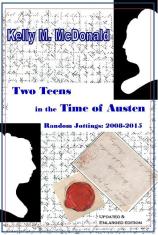
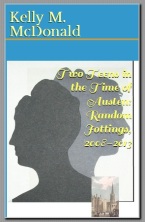
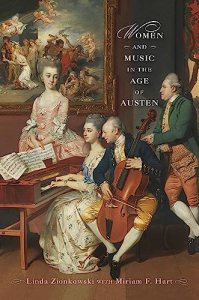





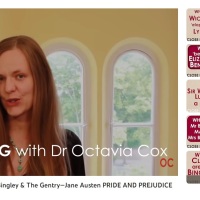
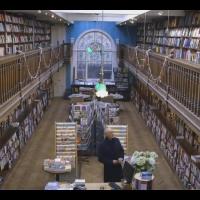



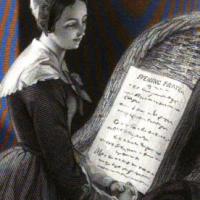




paula byrne (@austenportrait) said,
December 27, 2011 at 5:36 am
Fantastic post! Thanks for all your help and interest. Sorry about “cloak and dagger” of original emails: was under fierce BBC non-disclosure agreement!!!
Paula
Janeite Kelly said,
December 27, 2011 at 8:48 am
Hi, Paula — Our excitement is equal, I dare say, but for differing reasons!! If you have a moment, and can enlighten non-UK residents (we cannot watch the special on the BBC), I’d be happy to post your thoughts or comments.
Congratulations!
k
chez said,
January 20, 2013 at 10:53 am
I was excited to finally see the program tonight on SBS in Australia
Paula have you got any further in authenticating the portrait?
I whole heartedly agreed with you about her ‘look’ the family picture never fitted my view of the tongue in cheek, spinster, to hell with convention Austen! Even when at Chawton in 1996 on a visit to her home…that image didn’t fit!!
Janeite Kelly said,
January 20, 2013 at 11:16 am
Hi, chez —
If Paula visits the blog, I hope she comments!
It’s possible she discusses the portrait more (it is certainly on the COVER of the UK version) in her due-soon biography of Austen. We shall see.
I must admit to being in the camp with Sir Roy Storng; how on earth can one authenticate such a piece?? It may, therefore, live with others that await some thumbs up or down from “authorities” for quite a while.
Thanks for visiting, and commenting.
k
Viv Lorimer said,
December 27, 2011 at 11:21 am
I have recently written a history of Churchill Court, Kippington, Sevenoaks, and the Francis Austen connection rekindled my interest in Jane & her work. On the basis of what was included in the programme, it would indeed seem that the ‘new’ portrait could be of Jane. The family likeness and the costume details are important, while the ‘Austin’ spelling is not: many of the primary source documents I have worked with over the years give different spellings of both people and places.
It is the use of plumbago on vellum which, for me, is the major problem: both the technique and the material had fallen out of use by the end of the eighteenth century- a good twenty to thirty years before the putative date of this portrait.
Has the portrait been dated by forensic examination? The identification of the barium pigment sufficed only to place the portrait as pre-mid nineteenth century. I would have expected other tests to have been carried out – for example, on the ink of the ‘Miss Jane Austin’….
I look forward to further work being done on this fascinating portrait.
Janeite Kelly said,
December 27, 2011 at 11:37 am
Hi, Viv —
Isn’t it amazing that little nuggets from Austen’s novels — and her life — touches so much research. I’d be so interested to hear more about your work on Sevenoaks.
You drop some TANTALIZING hints about the contents of the BBC program (which we in the US cannot yet view). From some things I’ve read (before the broadcast more than after) there are some segments of “evidence” that got left on the cutting room floor.
I’m right alongside you: waiting for more!
k
My Review of “Jane Austen: The Unseen Portrait”. « Austenonly said,
December 30, 2011 at 10:46 am
[…] Others certainly think differently. And that is obviously why this programme was made. Paula Byrne’s back story for the portrait -or so it appears to me- is that Jane Austen would have liked to have been portrayed in a portrait as a professional writer. Therefore, she may have sat for this portrait in London between the years of 1813-15, and may have done so secretly, not letting her family know of her desire to be thus portrayed. Hence its failure to be mentioned by the Austen family at all, and this especially explains why they didn’t refer to it in their search for a suitable image to be used in the Bentley editions and in the Memoir. One main candidate for authorship of the drawing is Eliza Chute, of the family who owned The Vyne, and who were friends and patrons of the Austens, in particular of Jane’s oldest brother, James. At one time Eliza Chute lived in George Street Westminster, within sight of Westminster Abbey and St Margaret’s Church, where, indeed, she was married. The view in the drawing appears to have been the view she had from her home. She was also known to have been a gifted artist and consistently spelt Jane Austen’s surname name as “Austin”. Go here to see some very interesting information about her on Kelly McDonald’s excellent site. […]
Arnie Perlstein said,
January 1, 2012 at 9:54 am
Below is a link to my blog post this morning in which I significantly alter, in a positive direction, my initial negative response (last month) to Prof. Byrne’s claims:
http://sharpelvessociety.blogspot.com/2012/01/three-faces-of-jane-updateand-new.html
Cheers, ARNIE
Emma Rutherford said,
January 4, 2012 at 8:57 am
I have just read your fascinating post on Eliza Chute. I featured in the BBC2 programme commenting on the unusual ‘plumbago’ technique of the possible Jane Austen portrait.
I thought you might be interested to know that the copy of the portrait of Maria, Lady Northampton, is after a miniature by Nathaniel or Andrew Plimer – both well established, successful and prolific artists of the late 18th/ early 19th century.
The portrait has certainly stimulated some fascinating debate.
Emma Rutherford
Janeite Kelly said,
January 4, 2012 at 9:43 am
Dear Emma — What FASCINATING news!
Have you come across the miniature?
There is a Plimer miniature of her two children (Spencer and Elizabeth) that came up for auction some years ago; I snagged a copy of the image for my growing “archive” of images. So cute! But probably done about the same time, then.
Would love to hear more info, if you know more! Either as a comment, or email me (see ‘the author’ for contact info).
What fun to hear about. Thanks for telling me!
k
Emma Rutherford said,
January 4, 2012 at 2:19 pm
Thanks for your reply – I am going by the style of the artist but am nearly 100% certain – I could look in the National Portrait Archive here next time I visit to see if I can find the original portrait? I will let you know.
Good article on the programme on my colleague’s blog here if you could share it?: http://arthistorynews.com/articles/922_Jane_Austen
Thanks and will keep in touch! Emma
Janeite Kelly said,
January 5, 2012 at 8:53 am
Hi, Emma —
Thanks for the link; very concise argument. I fully agree with the thoughts about the handwriting. And the Abbey/St Margaret’s is very puzzling, no matter what the presence is thought to signify.
I assume NPG’s holdings are found (at least in words; not always in images, I know) in their online catalogue? I wouldn’t want you to go to any trouble, but would love to hear of anything uncovered in the course of things.
I may have a couple questions for you, on another work…
Thanks for visiting, and commenting. A great thrill to hear from you!
k
Emma Rutherford said,
January 5, 2012 at 8:59 am
No problem – I am enjoying reading all the comments about the picture. Only the NPG’s owned works are online so I will check the archive for any images of Lady Northampton in the box files and let you know. Do you know if the copy you show is signed and/ or dated?
best,
Emma
Chester Mutton said,
January 5, 2012 at 2:43 pm
I appreciate your post, it was interesting and compelling. I discovered my way here through Google, I am going to go back another time :)
Pictures worth a 1000 words « Two Teens in the Time of Austen said,
January 22, 2012 at 12:01 pm
[…] easy it is to find the magazine in the US. You can read more about Emma Rutherford at her website. Emma kindly alerted Two Teens readers to an article on the Byrne Jane Austen portrait. Share […]
Paula Byrne: The Real Jane Austen « Two Teens in the Time of Austen said,
December 15, 2012 at 1:21 pm
[…] Byrne‘s biography of Jane Austen — how could I not?!? Not after the near-miss of having Jane’s portrait sketched by the likes of Eliza Chute (which I no longer think […]